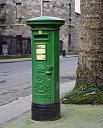|
The Delaware and Chesapeake RR -- Delmarva's peninsula line between Clayton DE and Easton MD did not reach this town until
sometime in 1868. But it must have been running late, since the town's train station was built in 1867. Going bankrupt in
1877 the DCRR changed ownership to the Philadelphia, Wilmington and Baltimore RR in 1882. In 1918 the Pennsylvania RR named
it The Oxford Branch. The route subsequently became part of the Maryland & Delaware RR Company (MDDE) before passing
to the Chesapeake RR which apparently only made a few test runs. October 30 1998 the rumbling of trains stopped all together.
The track appears to be abandoned, although there is talk of converting this 44 mile stretch from rails to trails. A
.5 mile spurt has been done in Easton MD. But I digress from where you want to be. You can follow the tracks at
where they parallel roads and occasionally are paved over by intersecting roads. Take a satellite view to see them delineate
the fields in this agricultural area. As you approach the town look closely for the "e" which isn't there, then
appears only to disappear again. What ding dong mapped this area?
Ok, let's get back on track (r r r %^ )
Are you at the last paved bit o'track before heading into town? Take that location and now head out in your vehicle of
choice. As you drive into town on the track side of the road you will pass a metal post -- old and rusty with a nibble out
of it near the base. Now slow down, you have gone past if you have passed the old grain loading station. Heading back in
the other direction the post is molded with a big "W" . . . for "Western" -- as in the 1903 film "The
Great Train Robbery".
Time for a little history from Wikipedia :
The film is only twelve minutes long, but is a milestone in film making, expanding on Porter's previous work "Life
of an American Fireman". The film used a number of innovative techniques including cross cutting, double exposure composite
editing, camera movement and on location shooting. Cross-cuts were a new, sophisticated editing technique. Some prints were
also hand colored in certain scenes. None of the techniques were original to "The Great Train Robbery", and it is
now considered that it was heavily influenced by Frank Mottershaw's earlier British film "A Daring Daylight Burglary".
The film uses simple editing techniques (each scene is a single shot) and the story is mostly linear (with only a few "meanwhile"
moments), but it represents a significant step in movie making, being one of the first "narrative" movies of significant
length. It was quite successful in theaters and was imitated many times. [extracted from www.wikipedia.com]
However, films are not what the PostMystress is about. Stamps are her passion. So when you find the box at the base
of the "W" -- the log book will expand your knowledge on this issue. Bring your own black ink pad and be very
careful of zoom zoom.
|

